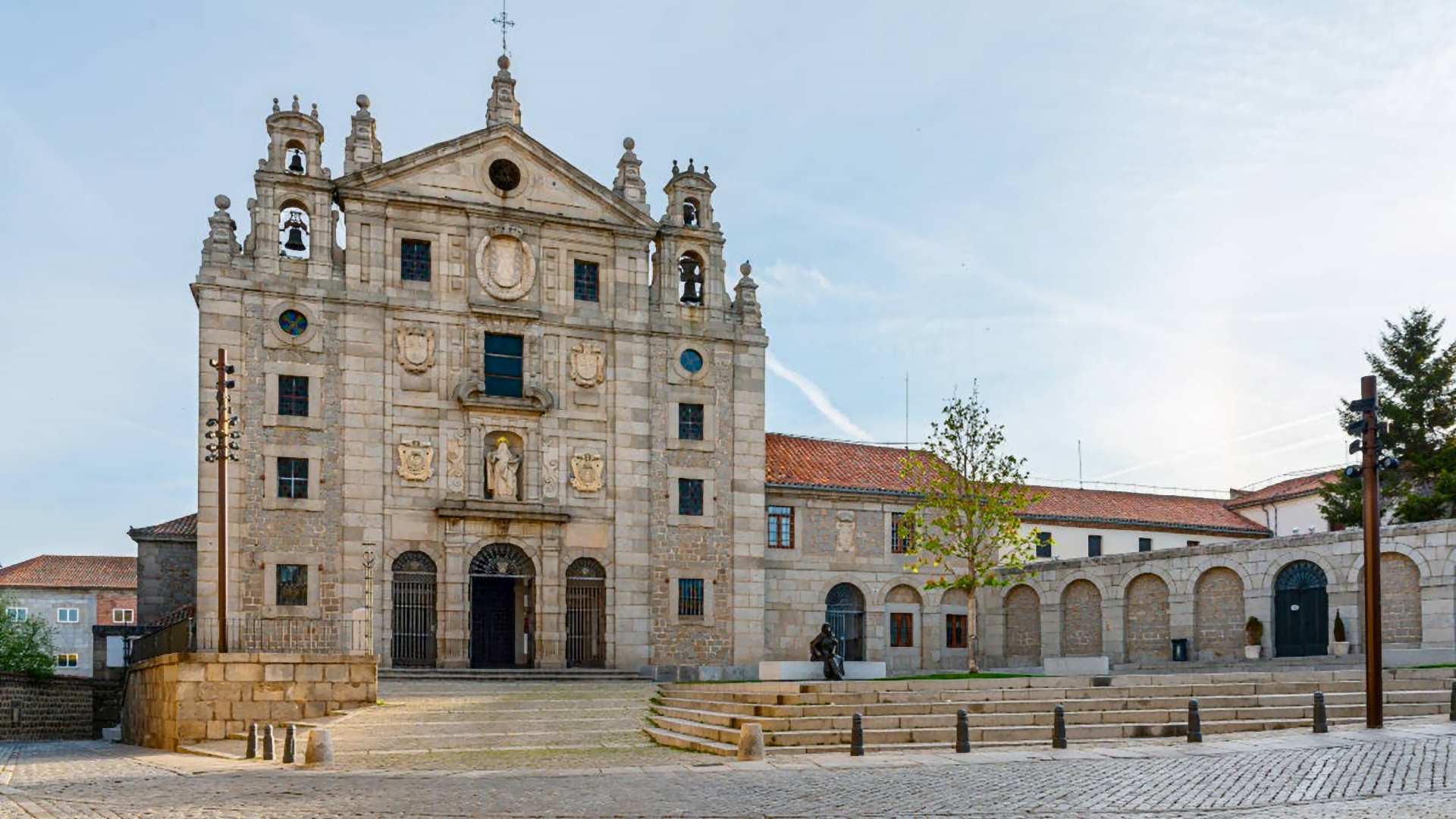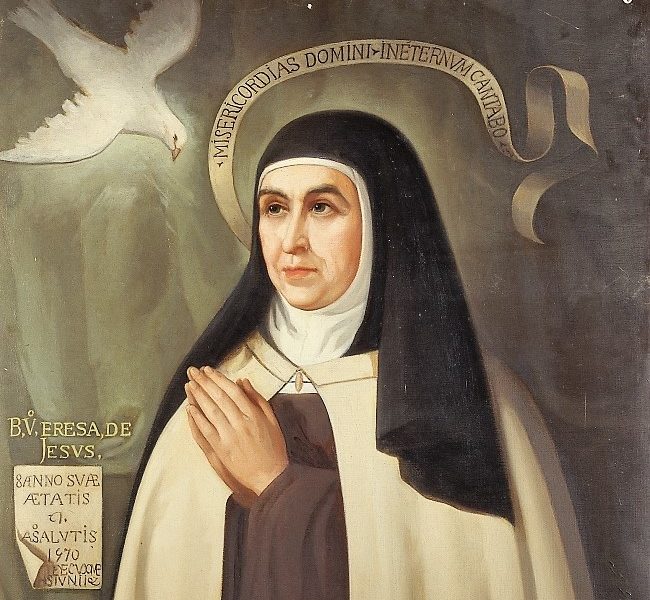St. Teresa of Jesus
With the 5th Centennial of St. Teresa’s birth to be celebrated in 2015, it is appropriate to highlight the importance of her figure and her writings while also remembering the works of St. John of the Cross.
St. Teresa of Jesus (Avila)
(b. 1515-Avila—d. 1552-Alba de Tormes, Salamanca)
Both of them were figures of their Epoca, who reformed the Carmelite Order and left a deep imprint on following generations of Christians with their mystical thoughts, writings and poems.
We would like to propose a pilgrimage that will bring you close to the origins and times of these two Saints, while you follow in their footsteps, visit some of the monasteries they founded, read some of their poems, visit the tomb of St. John, and pray before some of their relics.
St. Teresa was born in Avila in 1515, under the name of Teresa de Ahumada, of noble parents and granddaughter of a converted Jew dedicated to the textile industry.
Even as a child, she showed signs of her later religious vocation, while her characteristic daring and persuasive personality was reflected early in her convincing her sister to join her quest to travel to Muslim lands to be martyred. Through the intervention of a family member, their venture only got as far as the walls of Avila. Her mother died when Teresa was 18 and her father decided to ingress her in the Augustine convent of Gracia. In 1536, she took the veil in the Carmelites. A turning point in her life occurred when she fell into a coma for four days and was given up for dead by the doctors when she awoke deliriously and prognosticating the future. The curation she believed was due to the intervention of St. John. During the following twenty years, on repeated occasions, she revealed that she had been in direct contact with God and had had visions, such as those of Hell, which impelled her to strictly observe the orthodoxy of her Order.
In 1562, she founded her first reform convent in Avila, in which she intended to reestablish the strict obedience of the rules set down in 1247 for the Carmelites, postulating prayer and contemplation as the basic pillars of Faith. Not without opposition, she founded 17 reformed convents. In doing so, she was greatly supported by St. John of the Cross.
In 1582, she was sent to Alba de Tormes, by order of the Duchess of Alba, where she died on the 15th of October. Devotional writings attribute sainthood to her, noting the perfumed scent and incorruptibility of her corpse even after three years of burial. In 1614, she was beatified by Pope Paulo V; in 1622, she was canonized by Pope Gregorio XV; and in1970, she was declared Doctor of the Church.
The great mystic, she is distinguished for her elevated thinking and the literary beauty of her writings, among which “Camino de perfección” and “Las moradas”, are exceptional.
St. John of the Cross
(b. Fontiveros, Avila 1542 –d. Ubeda 1591)
Juan de Yepes studied with the Jesuits in Medina del Campo, although he took vows with the Order of the Carmelites. He studied at the University of Salamanca until 1567 when he was consecrated in the priesthood and celebrated his first mass in Medina del Campo. It was in this period when he came within the sphere of influence of St. Teresa of Avila/Jesus. He became intensely involved in her reform movement and came to edit some of her writings.
In 1568, he founded the first Discalced Carmelite Convent. Frugality and contemplation were the principal themes that ruled in the daily life of these convents. St. John of the Cross dedicated his life to the reform of monastic life and to an intense activity of spreading the Word of God.
In 1577, he was made a prisoner in Toledo, and during this period, he wrote: “Cántico spiritual” and other verses. The continual practice of fasting and his weak constitution provoked serious health problems and upon release from prison, he had to take repose in a monastery. Having recovered his forces, he continued not only to found convents but also to undertake the reformation of the Carmelite Order. “Cántico spiritual”, “Subida del Monte Carmelo”, “Noche oscura del alma” and “Llama de amor viva” are the evocative heritage of this singular Saint.
His last years were quiet and solitary. In 1726, he was canonized and two centuries later was named Doctor of the Church.
St. John of the Cross transmits his spiritual experiences through symbols and his delirious images express his mystical inclination. In order to remove any difficulties that might arise in understanding his verse, he added prose commentary. For this reason, he is considered to be one of the principal theoreticians of mysticism.
His poems attempt the reconciliation of man with God. To accomplish this he advocated that Man must distance himself from the banal things of the world. The mysticism of St. John of the Cross, when it reaches its greatest spirituality, recurs to images of sublime sensuality that approach eroticism. Some authors have noted the influence in his works of the Bible and Garcilaso de la Vega. The linguistic richness and variety of his style are other outstanding features of his writings. Definitely, his religious fervour raised Spanish mysticism to its maximum splendour.
-
Destination
TOUR LOCATION





